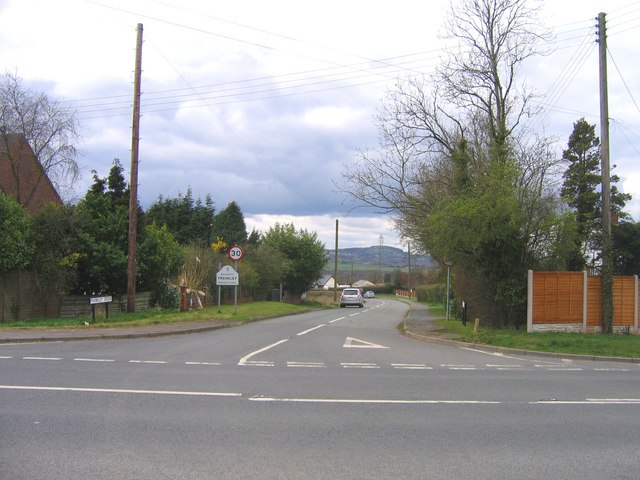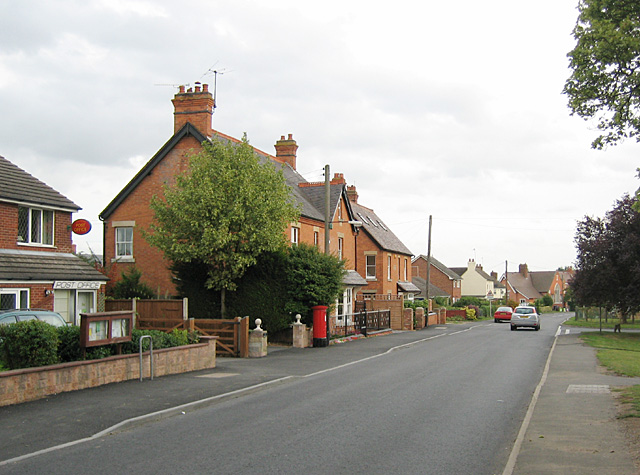|
Frankley
Frankley is a village and civil parish in Worcestershire. The modern Frankley estate is part of the New Frankley civil parish in Birmingham, and has been part of the city since 1995. The parish has a population of 122. History Frankley is listed within the hundred of Cane in Worcestershire in the 1086 Domesday Survey. In the mid-12th century Cane was combined with other Domesday hundreds to form the hundred of Halfshire, which was extant through the 19th century. Adam de Harvington, or de Herwynton, (died c.1345), Lord Treasurer of Ireland, owned the manor of Frankley in the fourteenth century. St Leonards Church The 15th-century church building lies to the north of the village. The building is constructed from sandstone in a red and grey colour, until 1965 the tower contained two bells. A new church hall was constructed in 2005. Frankley services The village gives its name to Frankley services, a motorway service area on the M5 motorway to the north west of the villag ... [...More Info...] [...Related Items...] OR: [Wikipedia] [Google] [Baidu] |
St Leonard's Church, Frankley
St Leonard's Church, Frankley is a Grade II* listed parish church in the Church of England in Frankley, Worcestershire. History The church dates from the 15th century. It was altered around 1751 when the wooden tower was rebuilt in stone, restored in 1873 and there were other alterations and additions 1931 – 1932 by Bateman. There was another restoration in 1947 following a fire. The tower main arch has a hood mould with head stops depicting King George V and Queen Mary. The building is constructed from sandstone in a red and grey colour, until 1965 the tower contained two bells. A new church hall was constructed in 2005. Organ The organ dates from 1884 by J. W. Walker & Sons Ltd. It was modified by Walter James Bird and Son in 1933. A specification of the organ can be found on the National Pipe Organ Register. References {{reflist Frankley Frankley Frankley is a village and civil parish in Worcestershire. The modern Frankley estate is part of the New Frankley civ ... [...More Info...] [...Related Items...] OR: [Wikipedia] [Google] [Baidu] |
New Frankley
New Frankley in Birmingham is a civil parish in Birmingham, England. As such, it has its own parish council. History It was established in 2000 in an area in the south-west of the city south of Bartley Reservoirmap, transferred from Bromsgrove (and thus also from Hereford & Worcester to the West Midlands County) in 1995, which had previously been part of the Frankley parish. Description The parish borders Frankley parish in Bromsgrove District to the north, the unparished area of Birmingham to the east, the unparished area of Rubery to the south, and Romsley parish to the west. According to the 2001 census the parish had a population of 7,890. Frankley Beeches In 1930, Frankley Beeches, "a prominent viewpoint 800 ft above sea level", a small wood or beech copse from which the old Bournville factory was visible, was given by the Cadbury company to the National Trust in memory of Richard and George Cadbury. See also * Frankley Reservoir * Frankley Water Treatment Works *King E ... [...More Info...] [...Related Items...] OR: [Wikipedia] [Google] [Baidu] |
Frankley Water Treatment Works
Frankley Water Treatment Works is a drinking water plant at Frankley, Birmingham, England. Owned by Severn Trent Water, it supplies drinking water to Birmingham and the surrounding area. The plant treats water from the Elan Valley in Wales, which arrives at Frankley Reservoir by gravity feed along the Elan aqueduct with a gradient In vector calculus, the gradient of a scalar-valued differentiable function of several variables is the vector field (or vector-valued function) \nabla f whose value at a point p is the "direction and rate of fastest increase". If the gr ... of 1 in 2,300. External linksDescription of treatment process [...More Info...] [...Related Items...] OR: [Wikipedia] [Google] [Baidu] |
Frankley Reservoir
Frankley Reservoir is a semi-circular reservoir for drinking water in Birmingham, England, operated by Severn Trent Water.Environment Agency public register of Large Raised Reservoirs, as at 2 November 2020, via Its construction was authorised by the Birmingham Corporation Water Act of 1892.55 & 56 Vict. c. clxxiii It was built by Birmingham Corporation Water Department to designs by Abram Kellett of Ealing in 1904. It contains of water received from the Elan Valley Reservoirs, away, in Wales, which arrives via the Elan aqueduct, by the power of gravity alone, dropping – an average gradient of 1 in 2,300. Before 1987 it was leaking per second. In that year ground-penetrating radar was used successfully to isolate the leaks. See also *List of reservoirs and dams in the United Kingdom This is a list of dams and reservoirs in the United Kingdom. England Buckinghamshire * Foxcote Reservoir, north of Buckingham *Weston Turville Reservoir, between Weston Turville and W ... [...More Info...] [...Related Items...] OR: [Wikipedia] [Google] [Baidu] |
Adam De Harvington
Adam de Harvington, also called Adam de Herwynton (c.1270-c.1345) was a fourteenth-century Crown official and judge who had a successful career in both England and Ireland. He held office as Chief Baron of the Irish Exchequer and Lord Treasurer of Ireland, and as Chancellor of the Exchequer of England, and acquired considerable wealth as a result.Ball, F. Elrington ''The Judges in Ireland 1221-1921'' John Murray London 1926 Vol.i p. 25 Family He derived his name from his birthplace, Harvington, Chaddesley Corbett, Worcestershire; he was the son of William de Harvington or de Herwynton.Ball pp.66-7 He probably held Harvington Hall itself as a tenant of the Earl of Warwick, and is said to have died there. He had a lifelong association with Pershore Abbey. William de Harvington, Abbot of Pershore 1307-40, was his cousin, and Adam in a lawsuit of 1419 was described as William's heir. De Herwynton seems to have been the most usual contemporary spelling of the name. Career His path ... [...More Info...] [...Related Items...] OR: [Wikipedia] [Google] [Baidu] |
M5 Motorway
The M5 is a motorway in England linking the Midlands with the South West England, South West. It runs from junction 8 of the M6 motorway, M6 at West Bromwich near Birmingham to Exeter in Devon. Heading south-west, the M5 runs east of West Bromwich and west of Birmingham through Sandwell Valley. It continues past Bromsgrove (and from Birmingham and Bromsgrove is part of the Birmingham Motorway Box), Droitwich Spa, Worcester, England, Worcester, Tewkesbury, Cheltenham, Gloucester, Bristol, Clevedon, Weston-super-Mare, Bridgwater, Taunton, terminating at junction 31 for Exeter. Congestion on the section south of the M4 motorway, M4 is common during the summer holidays, on Friday afternoons and bank holidays. Route The M5 quite closely follows the route of the A38 road. The two deviate slightly around Bristol and the area south of Bristol from junctions 16 to the Sedgemoor services north of junction 22. The A38 goes straight through the centre of Bristol and passes by Bristol Airp ... [...More Info...] [...Related Items...] OR: [Wikipedia] [Google] [Baidu] |
Civil Parishes In England
In England, a civil parish is a type of Parish (administrative division), administrative parish used for Local government in England, local government. It is a territorial designation which is the lowest tier of local government below districts of England, districts and metropolitan and non-metropolitan counties of England, counties, or their combined form, the Unitary authorities of England, unitary authority. Civil parishes can trace their origin to the ancient system of Parish (Church of England), ecclesiastical parishes, which historically played a role in both secular and religious administration. Civil and religious parishes were formally differentiated in the 19th century and are now entirely separate. Civil parishes in their modern form came into being through the Local Government Act 1894, which established elected Parish councils in England, parish councils to take on the secular functions of the vestry, parish vestry. A civil parish can range in size from a sparsely ... [...More Info...] [...Related Items...] OR: [Wikipedia] [Google] [Baidu] |
Halfshire
Halfshire (Latin: ''Hundredum Dimidii Comitatūs'', "hundred of half (the) county") was one of the hundreds in the English county of Worcestershire. As three of the five hundreds in the county were jurisdictions exempt from the authority of the sheriff, the hundred was considered to be half what was subject to his jurisdiction, whence the name. The hundred seems to have been formed in the mid-12th century, by amalgamating the Domesday hundreds of Came (except three of the Came manors, viz. Alvechurch, Stoke Prior and Osmerley which went to the hundred of Oswaldslow), Clent, Cresslau, and Esch, other than those parts where an ecclesiastical exempt jurisdiction existed, which were joined to the appropriate ecclesiastical hundreds about the same time. Anciently, it contained the following manors: Belbroughton, Bentley Pauncefoot, Bromsgrove, Chaddesley Corbett, Churchill, Church Lench, Cofton Hackett, Cradley, Doverdale, Droitwich, Dudley, Elmbridge, Elmley Lovett, Feckenham ... [...More Info...] [...Related Items...] OR: [Wikipedia] [Google] [Baidu] |
Hundred (county Division)
A hundred is an administrative division that is geographically part of a larger region. It was formerly used in England, Wales, some parts of the United States, Denmark, Southern Schleswig, Sweden, Finland, Norway, the Bishopric of Ösel–Wiek, Curonia, the Ukrainian state of the Cossack Hetmanate and in Cumberland County in the British Colony of New South Wales. It is still used in other places, including in Australia (in South Australia and the Northern Territory). Other terms for the hundred in English and other languages include ''wapentake'', ''herred'' (Danish and Bokmål Norwegian), ''herad'' ( Nynorsk Norwegian), ''hérað'' (Icelandic), ''härad'' or ''hundare'' (Swedish), ''Harde'' (German), ''hiird'' ( North Frisian), ''satakunta'' or ''kihlakunta'' (Finnish), ''kihelkond'' (Estonian), ''kiligunda'' (Livonian), '' cantref'' (Welsh) and ''sotnia'' (Slavic). In Ireland, a similar subdivision of counties is referred to as a barony, and a hundred is a subdivision of a pa ... [...More Info...] [...Related Items...] OR: [Wikipedia] [Google] [Baidu] |
Lord Treasurer Of Ireland
The Lord High Treasurer of Ireland was the head of the Exchequer of Ireland, chief financial officer of the Kingdom of Ireland. The designation ''High'' was added in 1695. After the Acts of Union 1800 created the United Kingdom of Great Britain and Ireland, the Consolidated Fund Act 1816 merged the Irish Inferior Exchequer into the HM Treasury, British Treasury with effect from 1817. The act also mandated that the post of Lord High Treasurer of Ireland could only be held together with the post of Treasurer of the Exchequer, with the person holding both being Lord High Treasurer. If no person is appointed to the combined positions, then the Lord High Treasurer of Ireland is placed in commission and represented by the Lords Commissioners of the Treasury, as has been the case continuously since 1816. The Superior Irish Exchequer, or Court of Exchequer (Ireland), Court of Exchequer, remained, led by the Chief Baron of the Irish Exchequer. Lord Treasurers of Ireland 1217–1695 *1217 ... [...More Info...] [...Related Items...] OR: [Wikipedia] [Google] [Baidu] |
Motorway Service Area
Motorway service areas in the United Kingdom and Ireland, also known as services or service stations, are rest areas where drivers can leave a motorway to refuel/recharge, rest, eat and drink, shop or stay in an on-site overnight hotel. The vast majority of motorway services in the UK are owned by one of three companies: Moto, Welcome Break and Roadchef. Smaller operators include Extra, Westmorland and EG Group. History United Kingdom The first two service areas in the UK, Watford Gap and Newport Pagnell, opened with temporary facilities when the M1 motorway was opened, on 2 November 1959. It is a common misconception that Watford Gap was the first service area to fully open, when in fact Newport Pagnell was first, on 15 August 1960, a month before Watford Gap. Initially, most service areas were designed to be bold and attractive, with many opening viewing platforms and featuring fancy restaurants. The most famous example of a service area from this era is Lancaster, which ... [...More Info...] [...Related Items...] OR: [Wikipedia] [Google] [Baidu] |



.jpg)
